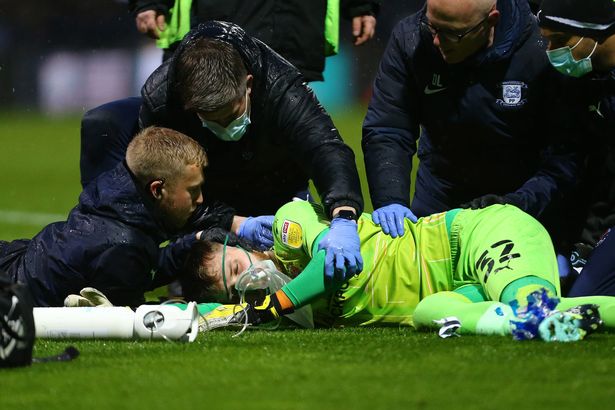EDITORIALS
Most common goalkeeper injuries and how to prevent it

Most common goalkeeper injuries and how to prevent it
Football is one of the most favorite and most popular sports of all time and the most common goalkeeper injuries that players suffer mostly are ankle sprains. Football significantly has the highest number of injured players yearly either during football matches or training.
There is no way to play the position without hitting the ground hard every time you make a save, chafing your skin against the abrasive tone every time you slide, consciously using your body as a wall to stop short range shots and, let’s not forget, the occasional body bumps into incoming opponents at full speed. As some coaches say, you have to be a little crazy to be a serious goalkeeper.
Shot-stoppers also twist and turn quickly, which could result in an ankle sprain.
A Goalkeeper is a very important member of a football team and plays a very crucial and pivotal role in a team’s defence. The Goalkeepers suffer lesser injuries than on-field players. This is due to Goalkeepers covering shorter distances and mostly shot-stopping by diving.
However, injury is defined as any physical complaint sustained by a player that results from a football match or football training in need of medical attention or time loss from football activities.
This also includes absence due to illness, disease and mental complaints.
The following are common goalkeeper injuries suffered by goalkeepers before or during a game:
1) PAIN IN GOALKEEPER
Pain can be in different types and localization, but if it gains a status of the same type in the same localization, it may be a signal for a player and medical staff. Pain is often accompanies recurring micro-traumas making regular pain monitoring necessary for injury prevention.
2) FINGERS AND HANDS
Due to the ball being kicked fast and hard at you, your reflexes must be quick. Even with quick reflexes, you can suffer an injury to your fingers and hands due to hard shots. Injuries to fingers and hands become even more likely when you dive side to side or leap to tip a ball over the ball.
You will often see goalkeepers remove their gloves following a match to see their finger joints, wrists, and knuckles tapped up. This is one way to reduce the risk of jamming and breaking fingers and wrists.
Also Read: Top 6 fastest soccer players in the world 2022
3) MUSCLE STRAINS
A muscle strain is an injury to a muscle or a tendon; the fibrous tissue that connects muscles to bones. Minor injuries may only overstretch a muscle or tendon, while more severe injuries may involve partial or complete tears in these tissues.
Muscle strains can occur in a variety of body parts from the back to the glutes to the legs. Hamstrings are probably the most often muscle strained. Goalkeepers need to jump, dive, and move in a variety of ways to stop shots.
Goalkeepers can also endure a leg injury by kicking the ball down the pitch. One of the most common ways goalkeepers suffer muscle strain in modern football is due to rushing out of goal to cover for defenders.
4)CONTUSIONS
Contusions are one of the most common goalkeeper injuries occurring to most goalkeepers.
A contusion, or bruise, is caused by a direct blow to the body that can cause damage to the surface of the skin and deeper tissues as well depending on the severity of the blow.
Due to the diving and collisions that can occur when playing in the net, goalkeepers can endure bruises, knots, and cuts. Contusions can be treated more easily than other injuries. For example, knots, swelling, and bruises can be iced after matches or training. Cuts that require stitches or treatment can send a goalkeeper to the sidelines for a short time.
Also Read: Top celebrity football players with beards in 2022















